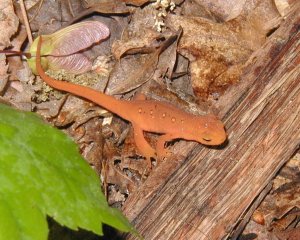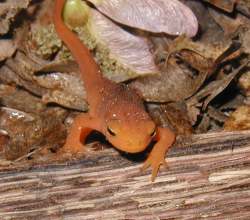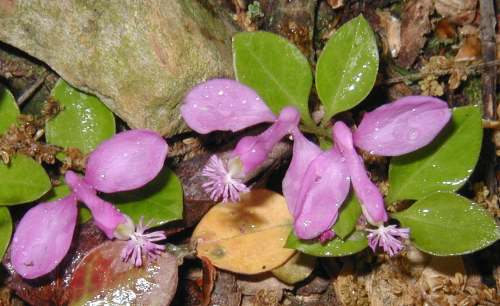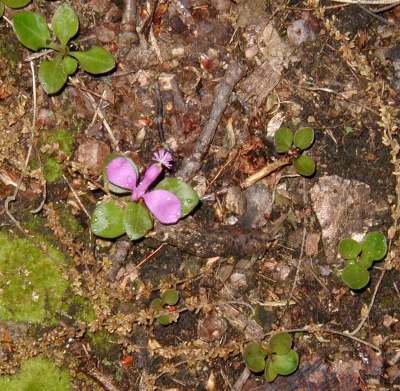A red spotted newt crossed my path today as we took a walk out back in the woods. It had been an overcast morning with a few sprinkles here and there. As it started raining lightly again I came across this little amphibian walking in the forest.

Red-spotted newt walking in the woods.
A few weeks ago when we had some warmer weather newts were rolling around together at the surface of the pond, which is about an 1/8 mile down hill from where I saw the newt today.
The bright orange color with red spots tells us that this little salamander is the terrestrial juvenile stage called a red eft. Both the younger, larval stage and the older, adult stage are aquatic in form.

Red-spotted newt, Notophthalamus viridescens viridescens, in the terrestrial juvenile stage — The Red Eft.
A favorite woodland plant of mine is blooming. Fringed Polygala, Polygala paucifolia, or Gaywings, has been blooming now for about a week. The blooms are unique with two hot pink sepals that flare to the sides and look like wings. Petals are united in a central pink tube having the lowest petal tipped with fringe.

The unique flowers characterize this member of the milkwort family. Gaywings can also be recognized by the cluster of broad leaves that arise from underground stems.
